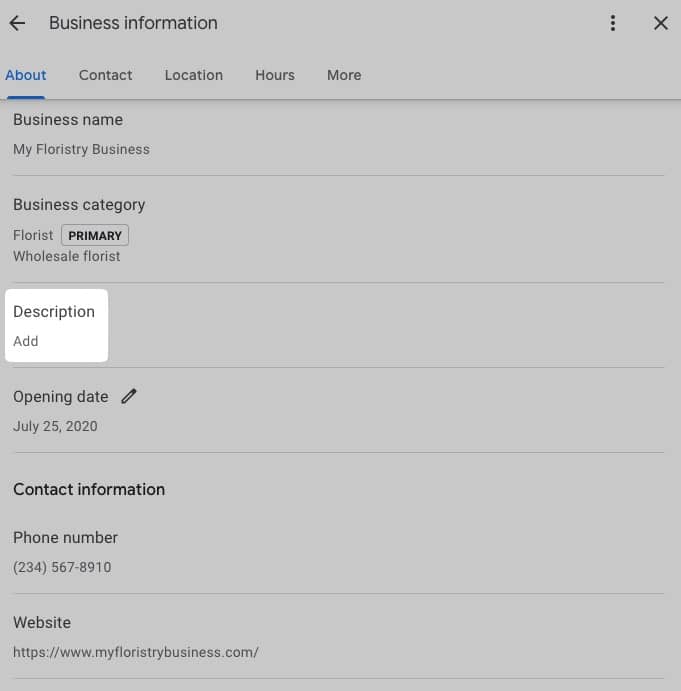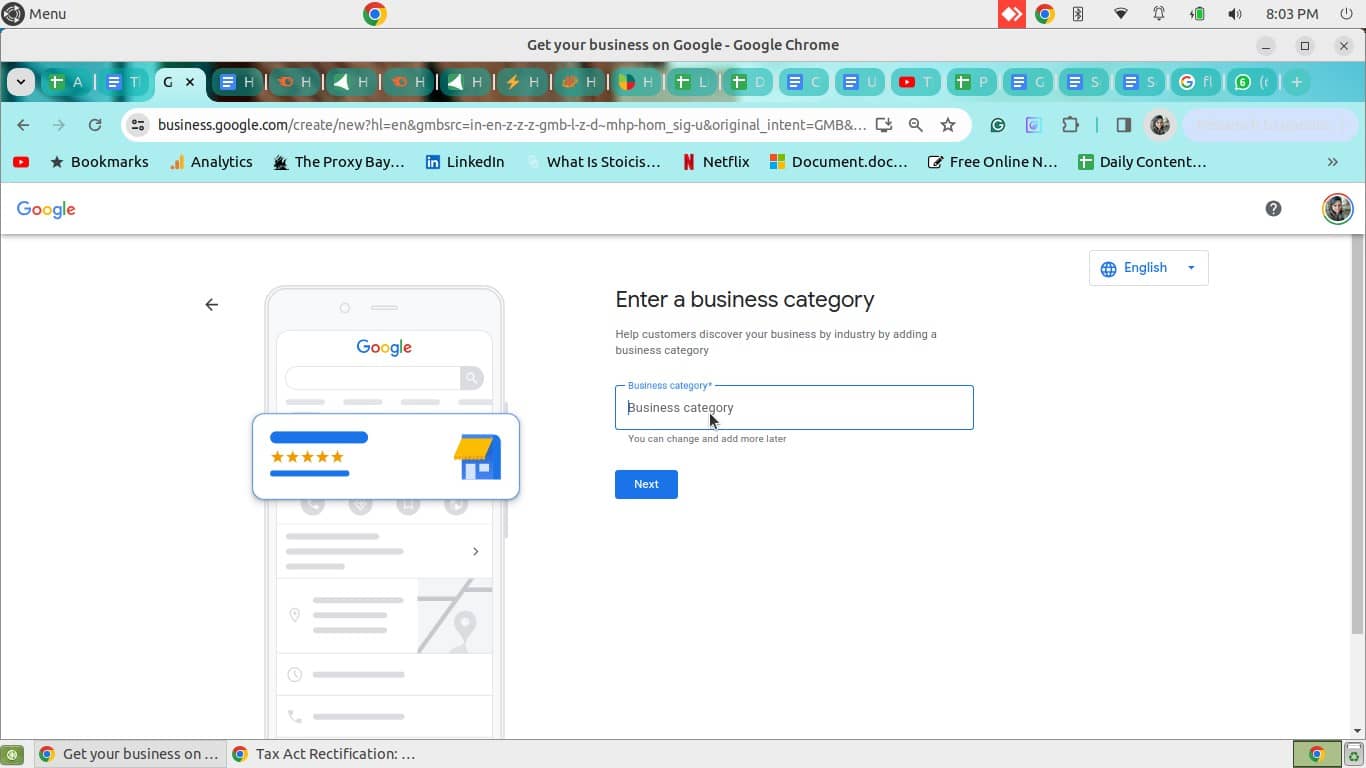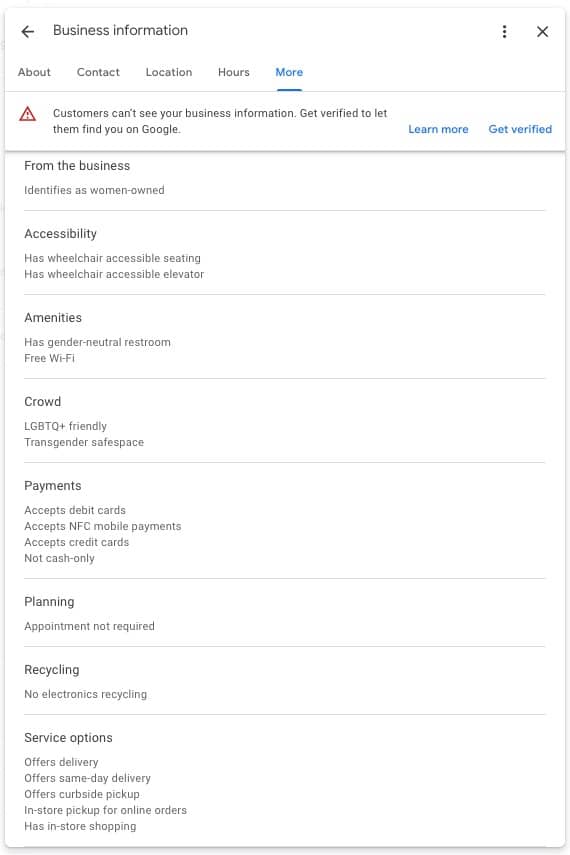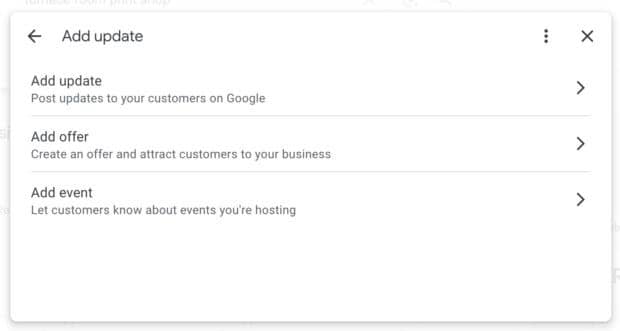Last Updated on February 19, 2025 by Admin
Google Business Profile (formerly Google My Business) is a free and straightforward tool that helps to manage your business details. Setting up a profile gives your business a chance to shine on Google Search and Maps. This can lead to attracting more customers.
But there’s a trick to boosting your visibility even further, and that is incorporating relevant keywords into your business profile. By using this tactic, you may improve your company’s visibility and drive local search traffic to your website.
In this blog, we will explore best practices for adding keywords to your Google Business Profile. Ready to get started? Let’s jump in!
Where to add keywords into Google Business Profile?
Below, we have listed where you should add keywords to your Google Business Profile:
1. Add keywords to your business description
Adding keywords to your business description helps Google and people searching on Google better understand what you offer and who you serve.
Include relevant keywords in your description and avoid overusing them. This makes sure your description is relevant, clear, and valuable. An excellent description will have the following:
- What do you offer?
- What sets you apart?
- Your history
- Anything else that’s helpful for customers to know
Example: (For a florist in San Diego)
“Blossom & Bloom is a San Diego-based floral shop specializing in fresh flower arrangements for weddings, events, and everyday occasions. Our expert florists craft beautiful bouquets with same-day delivery across San Diego.”
How to Edit Your Description:
- On your Google Business Profile, find the ‘Business information’ window. Click on the Description field.

- Type or paste your business information using the specific keywords you want to include. When done, hit ‘Save’.
2. Add keywords to your business categories
The main keyword in your business category should accurately describe what your business does. This makes it easier to attract the ideal customers to your company.
For instance: If you run a bakery specializing in organic bread, your business category could be ‘Organic Bakery’ to attract customers looking for natural baked goods.
- Primary Category: Organic Bakery (instead of just Bakery)
- Additional Categories: Gluten-Free Bakery, Vegan Desserts, Artisan Bread Shop
How to Edit Your Business Categories:
- You can visit the Business information window again and click on ‘Business Category’ to add a relevant keyword.

- You can add more relevant keywords to your business category by clicking on ‘+ Add another category.’
- After finalizing your list of extra categories, click ‘Save’ to update your profile with the new information.
Note: This approach increases the chances of your business being discovered by people using various search terms.
3. Add keywords as business attributes
Including factual information in your profile increases the likelihood that your company will appear in the search results of your target audience. Factual attributes are brief summaries of information that describe the features or offerings of your company.
For example, tell customers if your restaurant offers outdoor seating for dining under the stars or if your store offers delivery services that bring purchases right to their doorstep.

How to Add Attributes:
- Find the ‘Your business on Google’ menu to add factual attributes for your business. Select ‘Edit profile.’

- Then on the ‘Business Information’ page, select ‘More’ from the top row of tabs.

- You can add various attributes, from seating and delivery options to payment methods and amenities.

- Hit ‘Save’ once done to confirm your changes.
4. Add keywords to Google Business Profile posts
Adding relevant keywords or phrases to your posts in GBP is another wise option. You can choose from three different kinds of posts: events, offers, and what’s new. aim to make these posts brief and attention-grabbing, ideally no more than 80–100 characters, and aim to include keywords close to the beginning of your message.
How to Create a Post:
- Open your Google Business Profile.
- Click ‘Create Post’ and select the type (offer, event, update).
- Add a keyword-rich description and publish.

Regularly updating your Google Posts can help increase the visibility of your client in search results. The SERP (Search Engine Results Page) shows these posts highly. By using keywords, you’re effectively giving your client’s company an advantage by directing local traffic to them.
5. Add keywords while responding to questions and answers
Making a habit of responding to questions in your GBP is crucial. This isn’t just about managing your reputation; it also shows your customers that you’re attentive and engaged. Plus, here’s a little insider tip: it’s yet another fantastic opportunity to incorporate some keywords into your business profile.
Whenever a customer throws a question your way, you can add keywords with your answers in the Questions and Answers section. The trick is keeping your responses natural and ensuring that the keywords fit into your answers. This way, it doesn’t just help with your SEO efforts but also assists your customers.
How to research Google Business Profile keywords?
Google’s main aim is to deliver the best possible results to users, so when you use the right keywords, you’re helping the algorithm recognize your business as the top match for those specific terms. Here are a few ways to research local keywords for your business profile:
- Analyze with the local SERP: Just start typing in words related to your client’s business and cover all bases. Google will automatically populate suggestions, which you can then weave into your strategy.
If, for example, you’re conducting keyword research for a coffee shop, consider what potential customers might type into Google when looking for one: “coffee,” “café,” or “coffee shop near me.” These suggestions can guide your keyword choices and help you target what people are actually searching for. - Use keyword research tools: For more advanced keyword research, you can explore keyword research tools, like Google Keyword Planner, Google Trends, Ubersuggest, and Ahrefs. These platforms can provide deeper insights and can be integrated with your website’s SEO strategy for better results.
You can start with research using Google Ads’ Keyword Research Planner. This tool helps you build on the initial keywords you’ve brainstormed, offering new suggestions and variations to explore as you go along.
- Do competitor research: Another strategy is to keep an eye on your main competitors to identify which keywords they’re employing. If your goal is to outshine your competitor’s Business Profiles in search results, logically, you’ll want to incorporate similar keywords in your profile as well.
Examine the keywords they use and the attributes they’ve included in their profiles. This insight can guide you in refining and optimizing your client’s listing more effectively.
Final thoughts!
To effectively add keywords to your Google Business Profile, make sure everything you write is accurate, relevant, and keyword-rich. Describe your business, services, and any posts clearly and concisely. Ensure the primary keyword reflects what your business is all about, and add additional keywords throughout to spotlight what you offer and where you’re located.
If you need help with keyword research and optimizing your Google Business Profile, it’s advisable to contact AlgoSaga and utilize their result-driven SEO services to boost your efforts. Want to drive more local traffic and improve your rankings? Contact AlgoSaga for expert SEO services today.
